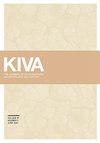剪刀村(La 581)的资源分配和健康
IF 0.4
0 ARCHAEOLOGY
Kiva-Journal of Southwestern Anthropology and History
Pub Date : 2022-01-31
DOI:10.1080/00231940.2021.1980655
引用次数: 0
摘要
蒂杰拉斯·普韦布洛(LA 581)是新墨西哥州普韦布洛四世时期的遗址。这项研究涉及两个研究目标:第一,检查空间聚类指标的埋葬分布,第二,测试与这些单位的关联是否影响资源获取和个人健康。使用地理信息系统(GIS),我使用最近邻和核密度分析来定义空间单元。骨骼学数据,包括年龄、性别和健康指标,以及太平间数据,用于检查空间单位和资源分布之间的相互关系。数据来源于20世纪70年代从蒂杰拉斯普韦布洛发掘的55个人。结果显示,与房间街区相关的墓葬有显著的聚集性,被解释为家庭单元。没有发现家庭之间基于埋葬物品的等级差异,尽管某些类型的埋葬物品在集群之间的频率不同。线性釉质发育不全的频率存在差异。本文章由计算机程序翻译,如有差异,请以英文原文为准。
Resource Distribution and Health at Tijeras Pueblo (LA 581)
Tijeras Pueblo (LA 581) is a Pueblo IV period site in New Mexico. This study addresses two research goals: first, to examine burial distribution for indicators of spatial clustering, and second, to test whether association to such units affected resource access and the health of individuals. Using geographic information systems (GIS), I define spatial units applying Nearest Neighbor and Kernel Density Analysis. Osteological data, including age, sex, and health indicators, as well as mortuary data, serve to examine the interrelatedness between spatial units and resource distribution. Data stem from 55 individuals excavated from Tijeras Pueblo during the 1970s. Results show a significant clustering of burials associated with room blocks, interpreted as household units. No hierarchical differences between households were found based on burial goods, although some types of burial goods varied in frequency between the clusters. Differences exist in the frequency of linear enamel hypoplasia.
求助全文
通过发布文献求助,成功后即可免费获取论文全文。
去求助
来源期刊
CiteScore
0.70
自引率
33.30%
发文量
31

 求助内容:
求助内容: 应助结果提醒方式:
应助结果提醒方式:


